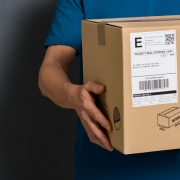7 Ways To Cut Shipping Costs
If you’re looking to increase your bottom line and cut expenses, your shipping department can be a great place to start. It’s easy to get comfortable with your shipping spend, and since bills from shipping carriers are generally consolidated, it can be easy to miss opportunities for cost savings on your inbound and outbound shipments.
Because of our work with manufacturers and distributors, we’ve seen a wide variety of techniques that our customers and their trading partners use to keep shipping spend under control. If you aren’t already, try using these techniques to keep your shipping costs as low as possible, and put procedures into play to reevaluate them on a regular basis as your carriers’ rates change. (A good choice this year may be a bad one next year as competitive winds shift in the shipping industry.)
- Split your shipping spend across multiple carriers.
Most companies tend to have a preferred carrier that they use almost exclusively, particularly for small-package shipments. Generally, this is the carrier who can provide the lowest cost for the majority of shipments, and of course this makes sense.
However, in cases where multiple carriers can provide a competitive price for a particular class of shipment, it can be beneficial to split up your spend across carriers. Not putting all your eggs in one basket can put your company in a stronger negotiating position with your primary vendor, and provide enough volume to pique the interest of your secondary vendor.
- Bring inbound shipments on-account.
If your vendors are shipping inventory to you on their carrier accounts, you may be leaving valuable volume on the table that could be used to negotiate better rates. Whenever possible, have your vendors ship on your account to ensure that both your inbound and outbound volume are reflected on your account.
- Check in with your carrier sales reps.
It may seem obvious, but make sure that you are checking in with your sales reps at each carrier on a regular basis! Keep them up-to-date on changes in your business and shipping operation, areas where you are getting better pricing from competitors, and be sure to ask the right questions. What can be done to decrease rates on your account? Are there more cost-effective ways to process existing shipments without decreasing service levels and on-time delivery?
- Ensure your reference rates are accurate.
If you’re using installed shipping software provided by the carrier, it can be important to keep your rate tables up-to-date, or the reference rates you see may be outdated! If you’re not sure how to update the rate tables, check with your carrier sales rep or their technical support team.
An even better way to access rate quotes is to use Bizowie’s direct carrier integrations. Our integrations provide real-time connectivity with carriers, which means that the rates are always up-to-date with no manual management required.
- Consider flat-rate shipping options.
Many carriers offer flat-rate options for small-package shipments, such as USPS’s Priority Mail Flat-Rate service or FedEx’s OneRate option. These services provide increased automation for carriers by standardizing box sizes, and can often provide competitive rates, especially for long-distance shipments. Some carriers also provide free shipping materials for their flat-rate services. Keep these options in mind and leverage them when the rates are competitive.
- Use USPS for lightweight shipments.
Many of our customers tend to write off the USPS as a shipping option due to outdated perceptions of slow delivery times, inaccurate tracking information, and limited online options. However, in recent years, the USPS has improved their services exponentially, and can often be a fast and cost-competitive carrier, particularly for lightweight shipments.
USPS Priority Mail and First Class Mail now offer guaranteed 2-4 day service to any US address, reliable tracking information similar to other small-package carriers, a solid on-time delivery rate, and extremely competitive pricing for residential and lightweight deliveries.
If you’re not currently using USPS, consider enabling Bizowie Cloud ERP’s integration with Stamps.com Endicia for seamless USPS connectivity alongside your existing shipping carriers.
- Think “Big Picture” when preparing a shipping price strategy.
Trying to get too granular with shipping spend analysis can be simultaneously stressful and mind-numbing, especially if you sell directly to retail customers or have a large number of small orders. Unless you’re passing on actual shipping costs directly to customers, almost every operation will have some shipments where they may money on their shipping charge, and others where they lose money. They key is coming up with a strategy that results in the desired effect, whether that’s a particular profit margin on shipping, or simply breaking even.
Using ERP reports like Bizowie’s Fulfillment Summary Report allow you to analyze groups of shipments (for example, by service, ship-to location, or carrier) to determine whether each group is meeting your objectives at a higher level, without having to analyze each individual order.

